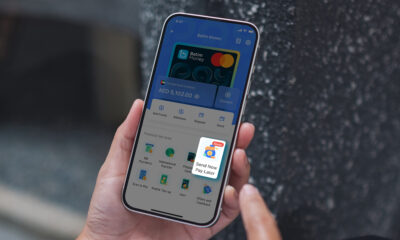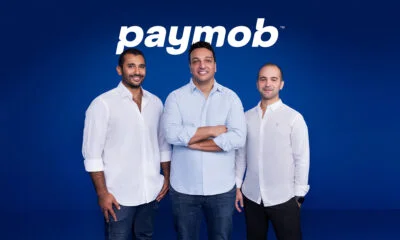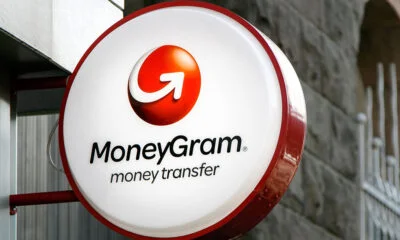Guides
A Guide To Digital Payment Methods In The Middle East
Learn about the world of digital payment methods in the Middle East with our comprehensive guide to confidently navigate the region’s financial landscape.

The digital payment revolution is well underway in the Middle East. The cultural changes brought about by the COVID-19 pandemic, the proliferation of smartphones and mobile internet access, as well as the increasing tech-savviness of the population have all contributed to a shift in the way people conduct transactions. As a result, a range of digital payment methods have emerged in the region.
Digital payment solutions in the Middle East promise greater convenience for consumers and businesses alike, allowing them to pay for goods and services without the need for physical cash. According to a Mastercard report, 85% of respondents in the MENA region have already used at least one digital payment method, and the number is expected to become even larger as time goes on.
In this guide, we provide a comprehensive overview of the most popular payment methods in the Middle East to help you transact efficiently and safely in the digital age.
Card-Based Payments Still Dominate In The Middle East
While the digital payment landscape in the Middle East is evolving rapidly, card-based payments still dominate it.
One study of the distribution of payment methods used for e-commerce in the Middle East and Africa revealed that credit cards and charge cards account for 31% of all e-commerce payments. The Payments & e-commerce report published by PPRO, a fintech company that provides digital payments infrastructure to businesses and banks, puts the share of card-based payments at 50%, so the reality is probably somewhere in between.
The same PPRO report states that the card market in the Middle East is split between Visa with 37 percent and Mastercard with 29 percent. The rest of the market is divided between American Express and other card providers.
E-Wallets Are On Track To Become The Most Popular Payment Method
In recent years, electronic wallets, or e-wallets for short, have emerged as strong contenders in the Middle East payment services market. It’s estimated that their use for e-commerce payments will grow from 17% in 2021 to 26% in 2025, and they are also becoming more popular when it comes to in-person payments.
E-wallets provide a number of key advantages compared with traditional payment cards, including:
- Greater Convenience: A single e-wallet can store multiple payment cards and sometimes even other payment methods.
- Enhanced Security: Unlike traditional payment cards, e-wallets can be easily protected with sophisticated biometric authentication.
- Faster Transactions: A payment made using an e-wallet is typically processed faster than a traditional card transaction.
The growth of e-wallets in the Middle East is in line with the global trend towards digital wallet adoption. According to a study by Juniper Research, the number of unique digital wallet users worldwide is expected to exceed 4.4 billion by 2025, up from 2.6 billion in 2020.
The Most Popular E-Wallets In The Middle East
Here are some of the most popular e-wallets in the Middle East. At the top of the list are apps developed by major global players, but there’s also no shortage of apps developed by local companies that cater to the region’s unique needs.
#1- Apple Pay
Apple smartphones are in the hands of many people across the MENA region. In Saudi Arabia, for example, Apple’s share in the mobile market is around 42%. It shouldn’t then come as a surprise that Apple’s own e-wallet, called Apple Pay, is so popular.
Launched in the UAE in 2017 and Saudi Arabia in 2019, Apple pay has since expanded to several other Middle Eastern countries, offering a seamless payment experience for Apple users. The contactless payment technology is supported by most major banks, and it takes full advantage of Apple’s Face ID technology for biometric authentication.
#2- Google Wallet
Google Wallet, formerly known as Google Pay, is another popular e-wallet in the Middle East. As the default e-wallet for Android devices, Google Wallet has a huge user base in the region, and it’s supported by a growing number of major banks, including Emirates NBD, Emirates Islamic, Mashreq, and others.
Google wants its e-wallet app to be a complete replacement for physical wallets, offering users the ability to store multiple payment methods, including credit and debit cards, as well as loyalty cards and event tickets. Some Android devices come with the Google Wallet app preinstalled, and the users of those devices that don’t come with it can install it from the Google Play Store app.
#3- Samsung Wallet
Samsung is the world’s largest Android phone manufacturer, and it has relatively recently launched its latest e-wallet app, called Samsung Wallet, in 13 new markets this year, including several Middle Eastern countries such as Bahrain, Kuwait, Oman, Qatar, and the UAE.
Just like Google’s own e-wallet, the Samsung Wallet app makes it easy for users to store everything from payment cards to travel passes, driver’s licenses, and student IDs. All sensitive information stored inside the wallet is protected by Samsung’s security platform, Samsung Knox, which stores data in an isolated environment, making it impossible for Android malware to touch it.
#4- e& money (By Etisalat)
Developed by Etisalat, the 18th largest mobile network operator in the world by the number of subscribers, e& money is the first digital wallet licensed by the Central Bank of UAE, and its goal is nothing less ambitious than to revolutionize the financial experience of UAE citizens and residents through its innovative super app marketplace.
Indeed, the e& money app can be used for international and local money transfers (over 200 countries are supported), merchant and bill payments, paying parking fees, gifting, and more. To use it, you need a valid Emirates ID and mobile number.
#5- klip (By Emirates Digital Wallet)
Owned and operated by Emirates Digital Wallet LLC (EDW), klip describes itself as a digital cash platform. It aims to reduce the use of cash in the UAE and support the government’s digital transformation initiatives. klip is backed by 16 UAE national banks, and it gives all other banks the opportunity to integrate their systems with it.
To use klip, users need to register through their bank (if it’s a partner bank) or directly with Emirates Digital Wallet. UAE residents who don’t have a bank account can register using a mobile number instead.
#6- Payit
First Abu Dhabi Bank’s Payit e-wallet has become a popular choice for users in the UAE, offering a wide range of features that streamline daily transactions. The digital payment service is available to anyone with a valid Emirates ID.
Users can use Payit to easily withdraw cash from ATMs, make local bank transfers within 24 hours, and effortlessly split dinner bills among friends with just a few taps on their smartphones. In 2021, the company behind the e-wallet partnered with omni-channel conversational commerce platform Platx to enable merchants to collect payments through WhatsApp.
#7- Careem Pay
Careem Pay, the financial services arm of the widely popular Middle Eastern ride-sharing app Careem, introduced its peer-to-peer digital wallet in 2022. The app makes it possible for its users to send, request, receive, and store money with just a phone number, personal QR code, or personal payment link.
Developed in partnership with First Abu Dhabi Bank (FAB) and Magnati, the digital wallet has been authorized by the UAE’s Central Bank. While currently available only in the UAE, Careem plans to expand the service to other countries in the Middle East in the near future.
No Shortage Of Alternative Digital Payment Methods In The Middle East
In addition to the rise of e-wallets, the Middle East has also seen the emergence of several alternative digital payment methods, each meeting different needs of the region’s consumers and businesses.
Global online payment solutions like PayPal and Payoneer make it easy for people in the Middle East to send and receive money across borders, and they are especially popular among freelancers and entrepreneurs. Both PayPal and Payoneer also provide mobile apps that allow users to manage their finances on the go.
No article about digital payment solutions in the Middle East would be complete without mentioning cryptocurrencies. According to the 2022 Global Crypto Adoption Index, MENA-based users received $566 billion in cryptocurrency from July 2021 to June 2022, a 48% increase from the previous year.
The growing popularity of cryptocurrencies in the Middle East can be attributed to the region’s favorable regulatory environment and robust infrastructure. In Dubai, for example, all transactions involving virtual currencies and digital tokens are regulated by the Virtual Assets Regulatory Authority (VARA).
Middle Easterners use cryptocurrencies like Bitcoin or Ethereum as decentralized alternatives to traditional banking systems, but they also recognize the potential of these digital assets as investment opportunities.
Conclusion
We hope that our guide to the most popular digital payment solutions in the Middle East has helped you gain a better understanding of the region’s diverse and rapidly evolving financial landscape. The growth of e-wallets alongside more traditional card-based payment methods, as well as the emergence of alternative payment methods like cryptocurrencies, showcase the region’s willingness to embrace technological advancements and respond to the evolving needs of its population.
Guides
The Most AI-Proof Career Opportunities In The Middle East
Concerned about AI’s impact on your career? Discover the most AI-proof job opportunities thriving in the Middle East and beyond.

The rise of artificial intelligence (AI) is sending shockwaves through the global workforce, transforming industries and displacing jobs at an unprecedented pace. Writers, graphic designers, web developers, transcriptionists, translators, and many others have seen their roles dramatically impacted in just the past two years (since the release of ChatGPT).
Given these rapid developments, it’s no surprise that people across the Middle East and other regions are increasingly looking for AI-proof their future. If you count yourself among them, you’ve come to the right place. In this article, we’ve thoroughly researched and compiled a list of career opportunities (presented in no particular order) that are likely to thrive in the Middle East despite the ongoing AI revolution.
Summary Of AI-Proof Career Opportunities:
| Career | Average Base Annual Salary (AED) |
| Artificial Intelligence Specialists | 171,000 |
| Maintenance Technicians | 48,000 |
| Doctors | 252,000 |
| Registered Nurses | 84,000 |
| Social Workers | 85,000 |
| Elementary And High School Teachers | 83,000 – 85,000 |
| Emergency Responders | 100,000 |
| Skilled Tradespeople | 60,000 |
Artificial Intelligence Specialists
💵 Average Base Annual Salary (Source): AED 171,000
It’s probably no surprise that one of the most career opportunities in the Middle East lies in the heart of the AI industry itself. The AI boom has naturally led to a surge in demand for professionals who have a deep understanding of the technology and can develop, implement, and troubleshoot AI systems.
In the United Arab Emirates, the number of AI workers quadrupled to 120,000 from 2021 to 2023, according to Al Olama, the UAE’s AI Minister, as the country pushes forward with its ambitious goal of becoming a global AI hub by 2031. The UAE is investing heavily in AI education and research, establishing dedicated AI universities and research centers to nurture local talent and attract international experts.
To become an AI specialist, you need to have a strong foundation in computer science, mathematics, and statistics. That’s why most AI specialists hold at least a bachelor’s degree in one of these fields, although many also pursue advanced degrees such as a master’s or Ph.D. to deepen their expertise and stay at the forefront of the rapidly evolving AI landscape.
Maintenance Technicians
💵 Average Base Annual Salary (Source): AED 48,000
The impact of AI extends far beyond the digital realm, as advanced robotics and intelligent machines are poised to revolutionize the physical world. Multiple companies, including Boston Dynamics, Tesla, and Figure AI, are working on developing general-purpose humanoid robots capable of performing a wide range of tasks guided by advanced AI reasoning.
As these sophisticated machines become more prevalent, they are expected to take over an increasing number of jobs in warehouses, factories, and hazardous environments. While this may lead to the displacement of some human workers, it also creates a growing demand for skilled maintenance technicians who can keep these complex systems running smoothly.
To succeed in this field, aspiring maintenance technicians should consider pursuing vocational training or a degree in mechatronics, robotics, or a related field. Hands-on experience through internships, apprenticeships, or industry collaborations can also be invaluable in developing the practical skills needed to excel in this role.
Doctors
💵 Average Base Annual Salary (Source): AED 252,000
In the Middle East, countries like Saudi Arabia, Qatar, and the UAE have shown a particularly strong willingness to embrace AI in healthcare, with two-thirds of their populations open to the idea of replacing doctors with robots, compared to just 55% across Europe, the Middle East, and Africa as a whole, according to a PwC study (PDF).
However, despite the rapid advancements in AI technology, doctors are unlikely to be made obsolete anytime soon. Instead, AI will become an invaluable tool that complements and enhances the expertise of medical professionals, enabling them to provide better care to their patients.
AI is already being used in various healthcare applications, from accelerating the development of new cures, enhancing disease detection, and improving patient outcomes. These developments have not gone unnoticed by UAE leaders, with the country’s National Artificial Intelligence Strategy 2031 placing significant emphasis on the healthcare field and the Ministry of Health and Prevention (MoHAP) launching the UAE health sector’s first Centre of Excellence (COE) for AI in October 2023.
Registered Nurses
💵 Average Base Annual Salary (Source): AED 84,000
Just like doctors, registered nurses are unlikely to be replaced by AI anytime soon, despite the development of robot nurses. The human touch, care, and empathy provided by nurses are invaluable, especially during times of sickness and vulnerability.
In fact, the demand for registered nurses in the Middle East is growing rapidly due to the region’s expanding population and the increasing healthcare needs of an aging demographic.
A recent report on the impact of AI on the Middle Eastern healthcare landscape predicts that the UAE will require an additional 15,000 nurses and allied health professionals in Abu Dhabi and 11,000 nurses in Dubai by 2030 to keep pace with the country’s healthcare needs. As a result, registered nurses can expect ample job opportunities in the Middle East, with AI serving as a tool to enhance their work rather than replace them.
Social Workers
💵 Average Base Annual Salary (Source): AED 85,000
The role of social workers is expected to remain essential and largely unaffected by automation. Social workers provide crucial support, guidance, and advocacy for individuals, families, and communities facing challenging circumstances, and the demand for their services is growing in the Middle East.
According to a recent statistic, the revenue of the human health and social work activities industry in the UAE is projected to reach approximately 5.9 billion U.S. dollars by 2024. This growth indicates a promising future for social workers in the region, as their skills and expertise will be increasingly sought after to address the diverse needs of the population.
For example, social workers have career opportunities in special needs centers, schools, geriatric and psychiatric hospitals, and other social service organizations. Depending on the specific role, such as social therapist, school counselor, or special needs teacher, obtaining a license may be required.
Elementary And High School Teachers
💵 Average Base Annual Salary (Source): AED 83,000 – 85,000
While AI is set to play a significant role in the education sector, it’s extremely unlikely to replace teachers entirely. Instead, AI will augment and support the work of educators.
According to the World Economic Forum, AI can assist teachers by automating administrative tasks, such as grading and record-keeping, allowing them to focus more on personalized interactions with students and enhancing the overall quality of education. Another exciting application of AI in education is the personalization of learning content and experiences. AI-powered systems can adapt to individual students’ needs, learning styles, and abilities, providing tailored support and resources to optimize their learning outcomes.
This creates new opportunities for tech-savvy teachers and those willing to embrace AI in their teaching methods. A teacher who understands modern AI tools and knows how to incorporate them effectively into their lesson plans will be highly sought after.
Emergency Responders
💵 Average Base Annual Salary (Source): AED 100,000
The jobs of emergency responders, including firefighters, paramedics, and police officers, are very safe from AI automation. The critical, hands-on nature of their work, which often requires split-second decision-making, empathy, and adaptability in unpredictable situations, guarantees that human responders will remain essential even in the future.
However, AI has the potential to revolutionize emergency response by assisting responders in various ways. Companies like Omdena are pioneering AI solutions to improve emergency response management, preparedness, and response.
For example, Omdena’s AI models analyze historical data, weather patterns, and other factors to predict the likelihood of emergencies such as floods, wildfires, and earthquakes. They also help optimize resource allocation and coordinate the response of different agencies to improve the efficiency and effectiveness of disaster relief operations.
Skilled Tradespeople
💵 Average Base Annual Salary (Source): AED 60,000
In the short term, skilled tradespeople can rest easy knowing that AI won’t be fixing leaky toilets, unclogging drains, or rewiring electrical panels anytime soon. The complex problem-solving skills and dexterity required for these tasks are still beyond the capabilities of current AI systems.
However, the medium and long-term outlook for trades in the Middle East is more complicated. As AI disrupts various industries, many people are considering transitioning to trades as a safer career option. This influx of new workers could potentially increase competition and put downward pressure on wages, especially for entry-level positions.
Moreover, in wealthier parts of the Middle East, the demand for skilled tradespeople is often met by workers from South Asia who are willing to accept lower wages. Despite these challenges, established tradespeople with a strong reputation and a loyal customer base can still thrive in the AI era by providing high-quality work and excellent customer service.
Conclusion
Even though the AI revolution is expected to disrupt the entire job market and make many traditional career paths obsolete, there are still plenty of work opportunities in the Middle East remain resilient against automation. Generally, the most AI-proof career opportunities are those that either directly contribute to the development and implementation of AI technologies or require uniquely human skills such as empathy, creativity, and critical thinking.




























